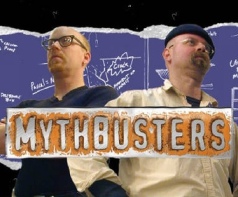 When most people talk about “passive recruiting,” they’re referring to the practice of targeting and recruiting so-called “passive candidates” – people who are not actively looking to make a move from their current employer.
When most people talk about “passive recruiting,” they’re referring to the practice of targeting and recruiting so-called “passive candidates” – people who are not actively looking to make a move from their current employer.
If you accept that notion – what would be the opposite?
Active recruiting?
Think about it for a moment. Neither phrase even makes sense grammatically. The “passive” in “passive recruiting” isn’t being used to describe the type of recruiting being performed – it’s being used to describe the type of candidates being recruited.
In this article, I challenge the notion of “passive recruiting,” implore you to retire the phrase, and introduce the concepts of active and passive sourcing.
Passive Recruiting?
What could “passive recruiting” possibly mean if you’re not using “passive” to describe the types of candidates being targeted?
Recruiting is intrinsically an active process – it requires action and active participation. So “passive recruiting” doesn’t actually exist!
However, if you don’t want to let go of the oft-overused phrase, my take on “passive recruiting” zeroes in on the talent identification phase of the recruiting life cycle. It actually is possible to take a passive role in candidate sourcing.
How?
If you’re sorting through, contacting and recruiting candidates who have responded to your job postings – you’re not having to actually find the candidates…they’re coming to you.
If you’re tracking down, contacting and recruiting candidates that have been referred to you by employees of your company or other candidates – you’re not having to actually identify the candidates…someone else has already done that for you.
Make no mistake – recruiting people who have responded to job postings and people who have been referred to you is an active process, whether the people are looking to make a change in employment or not. However, the candidate sourcing step is passive and reactive – the people have already been identified for you.
So if you simply must use continue to use the phrase “passive recruiting,” please make sure that you use it to describe the process of recruiting people who have already been identified for you.
Active Recruiting?
As I’ve already mentioned – recruiting is intrinsically an active process. Anyone who performs the recruiting function is performing “active recruiting,” regardless of the candidate’s job search status (active, passive, not looking…).
However, you can probably guess how I would distinguish the opposite of my more accurate definition of “passive recruiting.” Yes – it has to do with the candidate sourcing step of the recruiting life cycle.
If the candidates aren’t coming to you by way of ad responses and employee referrals, you’re taking an active role in the talent identification phase because you have to go out and hunt them down with no help from anyone else.
Let’s Move Forward!
Just because a whole bunch of people use the same phrase over and over to describe something, it doesn’t make it right. “Passive recruiting” is one of those concepts that has been perpetuated for years without much thought as to what it really means, which has resulted in widespread misuse.
Not only does it not make any grammatical sense – it doesn’t even really exist. It’s impossible for a recruiter to take a passive role in the recruiting process – you’re either recruiting someone or you’re not.
If you happen to be recruiting people who are passive and non-job seekers – you’re not passively recruiting…you’re actively recruiting passive candidates!
Don’t be a lemming and continue to follow the crowd – just let it “passive recruiting” go.
Now when you overhear someone use the phrase “passive recruiting” to describe the process of recruiting passive candidates, you can be “that” recruiter who says “Actually, you know the phrase ‘passive recruiting’ doesn’t make any sense…”
Passive and Active Sourcing
In all seriousness, I would like to advance and update the recruiting vocabulary by introducing the concepts of passive and active sourcing.
Passive sourcing: Not taking an active role in finding candidates to recruit because the candidates are identified for you – identifying potential candidates primarily through job postings and employee referrals.
Active sourcing: Finding potential candidates to recruit that don’t come to you – identifying potential candidates primarily through e-sourcing and cold calling.
Notice how the adjectives of “active” and “passive” are not describing the job search status of the candidates being found (which is actually irrelevant, IMO), but rather (and correctly, I might add) describe to the type of sourcing being performed.
Recruiting is intrinsically an active process, regardless of candidate job search status. However, the means of identifying the candidates you recruit isn’t.
What do you think?